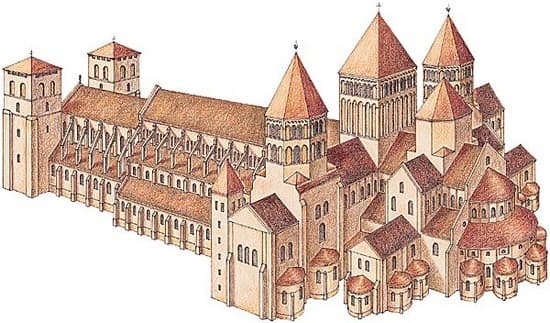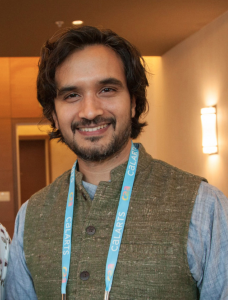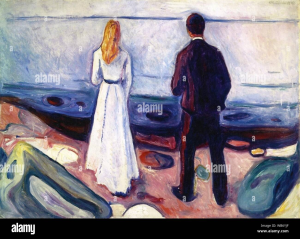Cluny III, renowned for its grandeur, held the title of the largest building in Europe during the Middle Ages, a true marvel of medieval architecture. This significant abbey located in Burgundy, France, became a subject of fascination for architectural historian Kenneth Conant in the 1920s, leading him to embark on a remarkable journey of reconstruction. Despite its tragic destruction during the French Revolution, Conant’s meticulous research and passionate efforts allowed him to breathe life into the remnants of Cluny abbey. His work is celebrated in the exhibition “Envisioning Cluny: Kenneth Conant and Representations of Medieval Architecture, 1872–2025,” currently hosted by Harvard. Through this exhibition, visitors can delve into the architectural history of the abbey and witness how modern technology enhances our understanding of this medieval masterpiece, a testament to Conant’s lasting legacy.”},{
The Enigma of Cluny III: Exploring its Architectural Grandeur
Cluny III, situated in the picturesque Burgundy region of France, once held the title of the largest building in Europe. Constructed starting in 1088, this Benedictine abbey was a marvel of medieval architecture that stood for over seven centuries. Despite its grandeur and historic significance, the abbey faced tragedy during the French Revolution, ultimately reduced to rubble. Harvard architectural historian Kenneth Conant’s journey to study Cluny III commenced in the 1920s when he encountered only remnants of its former glory, specifically the south transept and a handful of capital fragments, yet his dedication to understanding this monumental structure has enlivened the architectural history of the Middle Ages.
Conant’s meticulous efforts to reconstruct Cluny III have transformed the way scholars engage with medieval architecture. His vision was not merely to catalog the remnants but to express the essence of the building through detailed illustrations, despite having only fragments to reference. The exhibit at Harvard, themed ‘Envisioning Cluny,’ encapsulates this passionate pursuit to recreate and appreciate the scale and beauty of Cluny III while charting the evolution of techniques from drawings to advanced digital methods. This illustrates how the past can inform contemporary architectural understanding, resonate within art and culture, and inspire a new generation of historians.
Kenneth Conant’s Contributions to Architectural History
Kenneth Conant is a pivotal figure in the study of medieval architecture, particularly known for his in-depth work on Cluny Abbey. His academic journey at Harvard, where he earned both undergraduate and graduate degrees, positioned him at the forefront of architectural history during a period of profound discovery and development in the field. Conant dedicated his career to creating a comprehensive understanding of architectural forms, investigating how they evolved over time, and their societal implications within medieval life. His intense study of Cluny III led to groundbreaking insights regarding monastic architecture and its evolution, reinforcing his legacy within the architectural history discourse.
Through Conant’s lens, the Cluny Abbey became more than just a subject of study; it represented an era’s drive toward architectural innovation and expression. His idealism, as noted by scholars such as Christine Smith, drove him to imagine Cluny as it had once stood in all its splendor. This analytical yet creative approach paved the way for future historians and architects to reconnect with the past, illustrating the importance of imagination in architectural studies and the persistent pursuit of knowledge in visual arts and culture.
Reviving the Cluny Capitals: An Unsolved Mystery
Among the most intriguing elements of Cluny III are the eight capitals that Conant studied intensely. These damaged remnants offer a glimpse into the artistic capabilities of Romanesque sculptors, despite their incomplete states. Each capital is rich with enigmatic designs, featuring intricate depictions of flora, fauna, and musical instruments. Scholars continue to debate the origins and meanings behind these capitals; were they crafted by a single artisan, or do they represent the work of several sculptors? This ongoing dialogue is emblematic of the mystery surrounding Cluny’s architectural treasures, inviting further inquiry into their historical significance and the stories they might tell.
Modern technology has ushered in new methodologies for studying these capitals. With the advent of 3D modeling and photogrammetry techniques, today’s scholars can analyze the details of the Cluny capitals like never before. Unlike Conant’s time, when plaster casts were the primary tactile resource, current methods empower students to manipulate and explore the capitals in a digital space, allowing for a comprehensive comparison and a deeper appreciation of their artistry. The digital age presents not only new insights into medieval craftsmanship but also challenges traditional notions of preservation and representation in architectural history.
Exploring Harvard’s Celebration of Medieval Architecture
The exhibition ‘Envisioning Cluny: Kenneth Conant and Representations of Medieval Architecture, 1872–2025’ is a curated exploration of how innovations in technology have transformed the study and appreciation of medieval architecture. This Harvard exhibit not only showcases Conant’s contributions but also highlights how architectural history has evolved from hand sketches to immersive digital experiences. The combination of contemporary artistic tools with historical scholarship facilitates a unique dialogue between past and present, prompting visitors to appreciate the monumental journey of structures like Cluny III.
As part of this celebration, Harvard’s Graduate School of Design showcases how architectural scholarship has become more interactive. From traditional architectural drawings to modern virtual environments, the exhibit emphasizes the continued relevance of medieval architecture in contemporary discussions. By utilizing LSI keywords such as ‘photography,’ ‘3D digital models,’ and ‘architectural history,’ the display serves as a bridge linking the past with today’s technological advancements, inviting audiences to engage deeply with both the aesthetic and historical narratives of Cluny Abbey.
The Role of Technology in Historical Reconstruction
Technology has dramatically transformed the methodology of architectural historians. In the case of Cluny III, the use of photogrammetry allows for unprecedented exploration into the details of the abbey’s remnants. By creating digital replicas of the capitals, scholars can engage in new dimensions of research, zooming in on intricate details and engaging with the artwork in ways that traditional methods could not provide. This technological advancement illustrates the blend of history and modernity, granting students and researchers the ability to visualize and understand architectural forms as they might have existed centuries ago.
In addition to enhancing the study of medieval architecture, such technologies also help disseminate knowledge to wider audiences. Viewers of the ‘Envisioning Cluny’ exhibit can interact with the 3D scans, manipulating and examining the capitals from various angles. This interactive experience fosters a more profound understanding of the cloisters and the artistic philosophies behind them. It brings to life the historical narrative that Conant and his contemporaries strived to reconstruct, highlighting the importance of preserving and interpreting architectural history in an age of rapid technological development.
Legacy of the Cluny Abbey in Modern Architectural Studies
The legacy of Cluny Abbey, specifically Cluny III, endures in architectural studies as a critical reference point for scholars exploring medieval design principles. Its extensive influence on subsequent ecclesiastical structures illustrates the ideals of grandeur and functionality that defined the Romanesque period. As reflected in Conant’s scholarly work and the ongoing conversations about Cluny, the abbey continues to serve as an essential case study for understanding the evolution of religious architecture and its socio-political contexts throughout history.
Modern students and researchers examine Cluny not just as an archetype of a monastic structure, but as a cultural symbol that resonates through architectural history. As tools and techniques to study the past evolve, the significance of structures like Cluny III only grows, emphasizing the need to preserve their narratives. The dialogues initiated by Conant’s research remain relevant, encouraging contemporary architects and historians alike to analyze how medieval design principles can still inspire and influence current architectural practices.
Engagement with the Cluny Narrative in Contemporary Art and Culture
The storied narrative of Cluny Abbey has transcended the realm of architecture to become a subject of broader cultural engagement. It serves not only as a focal point for architectural history but also has influenced artistic expressions in literature, visual arts, and beyond. The fascination with Cluny reflects a deeper human connection to the past, as experiences of its architectural grandeur invite reinterpretation through art and culture. This exhibition at Harvard exemplifies how historical exploration continues to permeate modern societal debates, showcasing the continued relevance of past structures in contemporary multidisciplinary dialogues.
Events surrounding ‘Envisioning Cluny’ invite discussions on how historical narratives shape our understanding of identity, community, and architectural heritage. By showcasing the enduring mystery of Cluny III and the surrounding artifacts, the exhibition captivates audiences with the intertwining stories of heritage and continuity, inviting new interpretations and fostering a shared appreciation. In this way, Cluny Abbey transcends its physical absence, igniting imaginations and inspiring modern narratives within the artistic and academic realms.
Cluny III and its Influence on Modern Educational Practices
Cluny III’s architectural prominence has paved the way for innovative educational approaches within the field of architectural history. Its story offers a rich tapestry from which students can learn about the various techniques involved in studying historical structures. Institutions like Harvard have embraced the use of Cluny as a reference point, linking past practices with contemporary educational methods through exhibitions that emphasize the importance of hands-on learning and technological integration. This reflective practice encourages students to engage in critical thinking while navigating through the complexities of medieval architecture.
Moreover, the study of Cluny III fortifies students’ analytical skills by compelling them to interact with historical evidence through modern tools. This interactive learning fosters a deeper appreciation for the nuances of architectural history, instilling in students a sense of curiosity about how methods of reconstruction can illuminate understanding of the past. Cluny’s legacy as the epicenter of educational exploration in architectural history continues to inspire future generations of architects and historians as they strive to uncover and celebrate the echoes of their historical predecessors.
The Future of Architectural Studies: Lessons from Cluny III
Looking ahead, the study of Cluny III holds valuable lessons for the future of architectural scholarship. The principles, methods, and narratives established from Conant’s work underscore the importance of continuous evolution in how architectural history is approached. As advancements in technology open new avenues for exploration and understanding, engaging collaboratively within the field will become increasingly vital. The intertwined complexity of architectural forms, their cultural significance, and the role of historical narratives inform a progressive dialogue for the architectural community.
Furthermore, the pursuit of knowledge in architectural studies must remain dynamic, adapting to new scholarly challenges. The legacy of Cluny III embodies this evolution, encouraging dialogue among historians, architects, and technologists. As future researchers build upon Conant’s foundational work, they will further enrich the field by fostering innovative ideas and methodologies, ensuring that architectural history remains a vital part of the larger cultural conversation for generations to come.
Frequently Asked Questions
What is Cluny III and why is it significant in medieval architecture?
Cluny III is a Benedictine abbey located in the Burgundy region of France, notable for being the largest building in medieval Europe at the time of its construction in 1088. Its architectural significance lies in its scale and the influence it had on Romanesque architecture, serving as a prototype for later church designs throughout Europe.
Who was Kenneth Conant and how did he contribute to the understanding of Cluny III?
Kenneth Conant was an architectural historian from Harvard who began studying Cluny III in the 1920s. He played a crucial role in reconstructing the abbey’s design through meticulous research, excavations, and illustrations, which helped to shed light on its architectural history and the features of medieval structures.
What can visitors expect to see at the Harvard exhibition on Cluny III?
The Harvard exhibition, titled “Envisioning Cluny: Kenneth Conant and Representations of Medieval Architecture, 1872–2025,” showcases the evolution of architectural representation techniques, featuring hand-drawn sketches, photographs, and modern 3D digital models derived from Conant’s work. It explores the history and impact of Cluny III in medieval architecture.
How did technology enhance the study of Cluny III’s architectural features?
Advancements in technology, such as photogrammetry, have allowed for the creation of accurate 3D models of Cluny III’s decorative capitals. This enables architectural historians and students to interact with the designs in unprecedented ways, providing deeper insights into their form and historical context, unlike anything available to scholars like Conant.
What mysteries remain surrounding the capitals of Cluny III?
The eight capitals discovered at Cluny III are shrouded in mystery, with debates surrounding their origins and the narratives they may convey. Scholars, including Conant, have explored their potential themes, but uncertainty persists regarding their creator(s) and the cohesive story they were meant to illustrate, highlighting their significance in Romanesque sculpture.
How has the study of medieval architecture evolved since the time of Kenneth Conant?
Since Kenneth Conant’s time, the study of medieval architecture has evolved through advances in methodologies and technologies. Scholars now utilize digital tools and modern imaging techniques to analyze historic structures like Cluny III, which enhances understanding and accessibility of architectural history compared to the traditional methods of the early 20th Century.
What are some key features of Cluny III that defined its architectural style?
Key features of Cluny III that defined its Romanesque architectural style include its immense size, distinctive rounded arches, and richly decorated capitals. These elements not only exemplify the grandeur of medieval architecture but also influenced subsequent ecclesiastical buildings throughout Europe.
What role does the Cluny abbey play in understanding architectural history?
Cluny Abbey plays a pivotal role in understanding architectural history as it serves as an exemplar of Romanesque architecture and monastic life. Its design, scale, and decorative elements reflect the evolution of architectural practices in the medieval period, making it essential for studying the historical development of European religious architecture.
| Key Points |
|---|
| Cluny III, the largest building in Europe, was destroyed after the French Revolution. |
| Kenneth Conant began studying Cluny III in the 1920s, aiming to reconstruct it as it was in the Middle Ages. |
| The exhibit ‘Envisioning Cluny’ showcases various methods of studying medieval architecture from sketches to digital models. |
| Conant produced detailed illustrations of Cluny III based on similar structures despite never actually visiting it. |
| The exhibit includes interactive 3D models of Cluny capitals created through photogrammetry, allowing modern students to engage with them. |
| The mystery of the eight damaged capitals from Cluny III still intrigues historians as their exact significance remains uncertain. |
Summary
Cluny III stands as a remarkable symbol of medieval architecture, encapsulating a rich history that intertwines art and culture. This monumental abbey, once the largest in Europe, faced destruction during the French Revolution, leaving behind only remnants for scholars like Kenneth Conant to reconstruct. Through the exhibit ‘Envisioning Cluny,’ we explore Conant’s meticulous efforts and the evolution of architectural study, showcasing how tools and technology have transformed our understanding of such historic masterpieces. With interactive models and ongoing research, Cluny III continues to inspire curiosity and scholarly discourse about the past.









